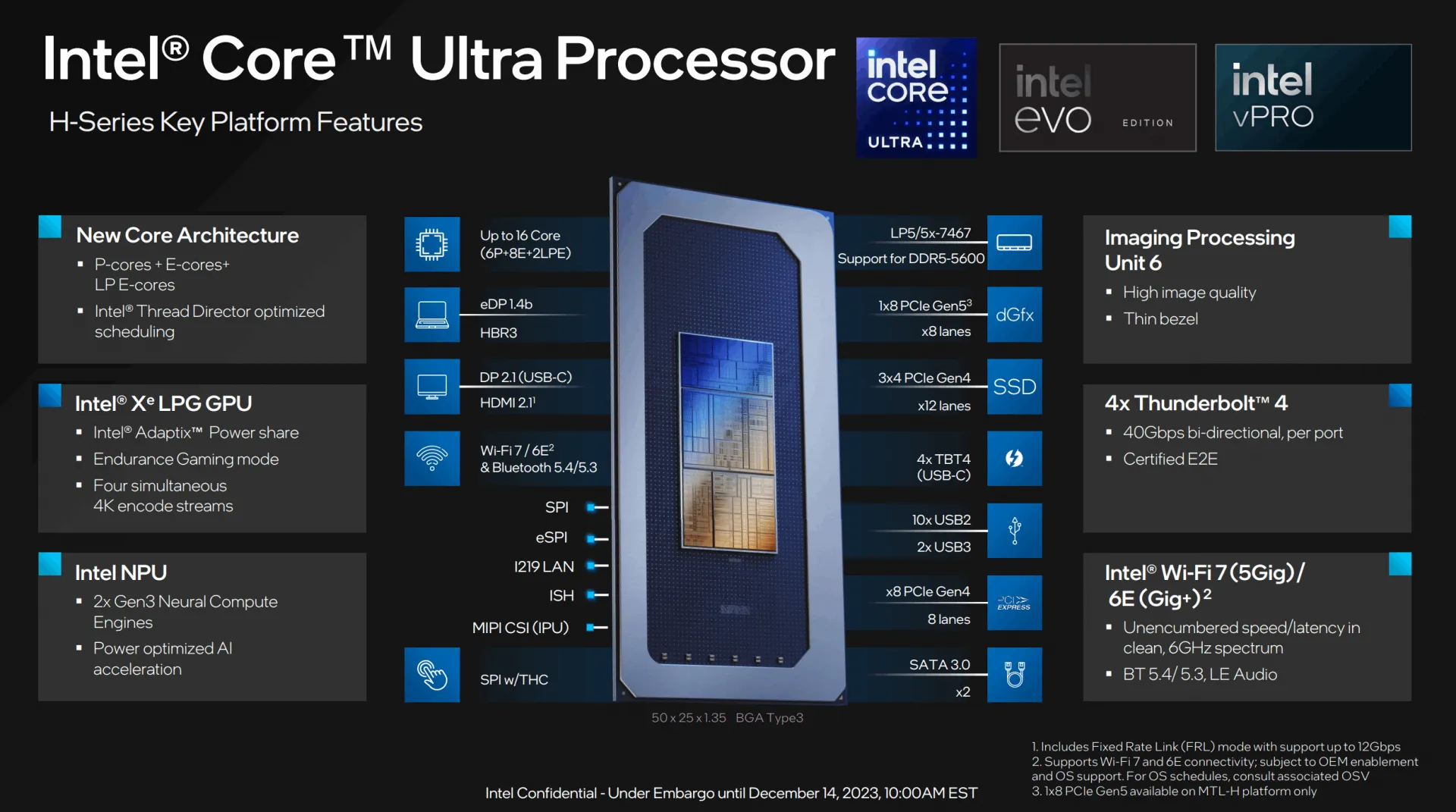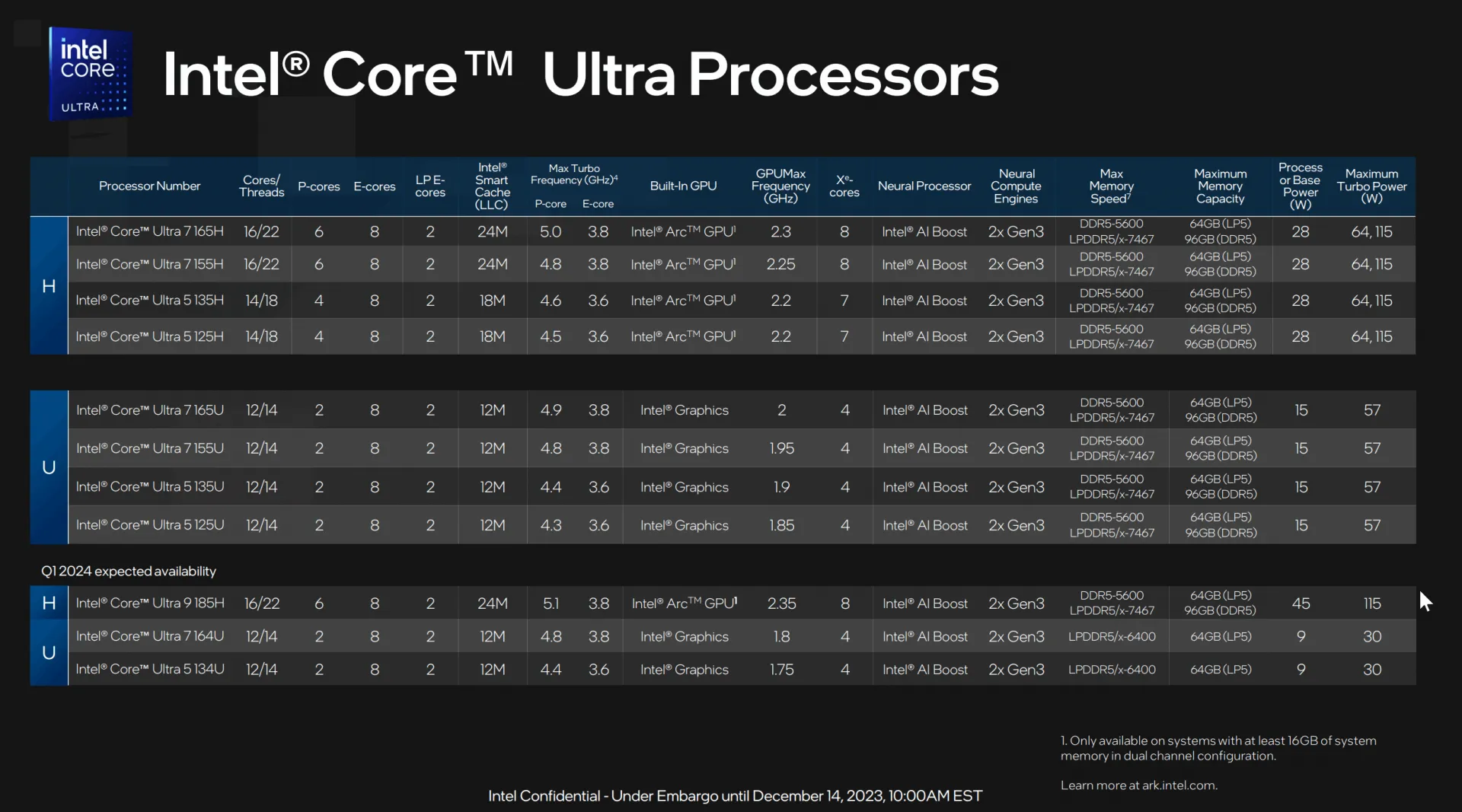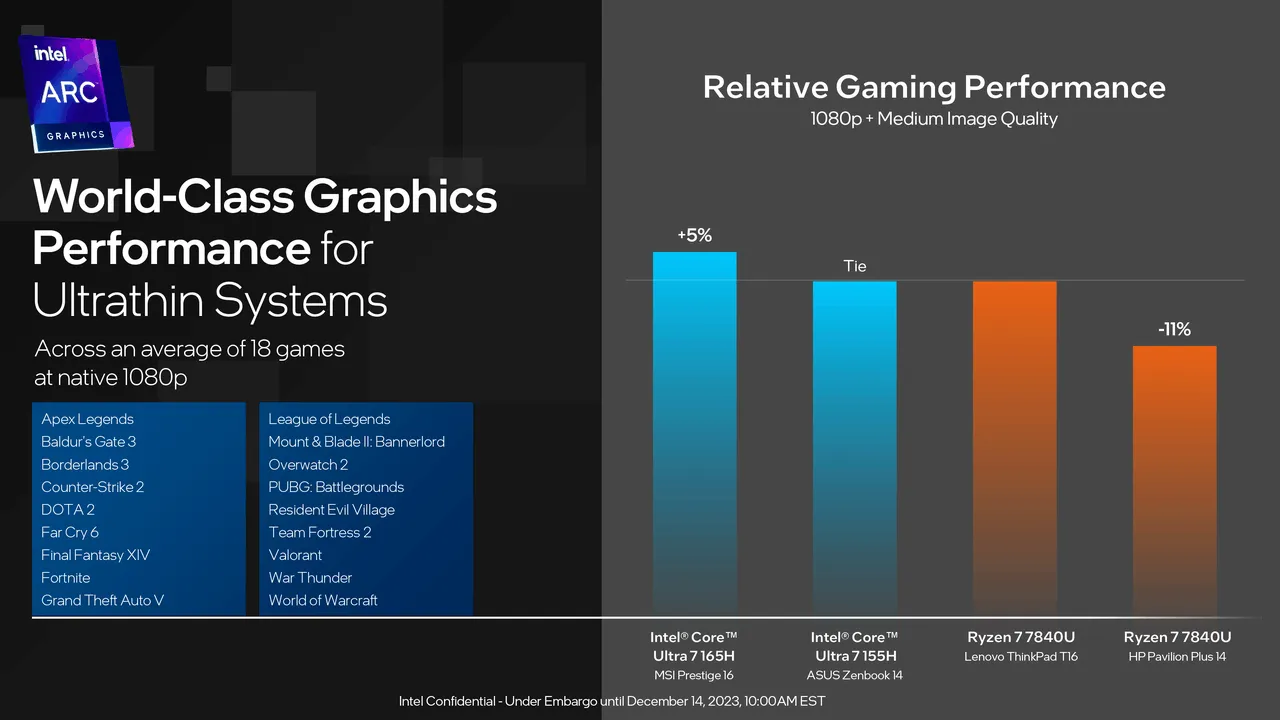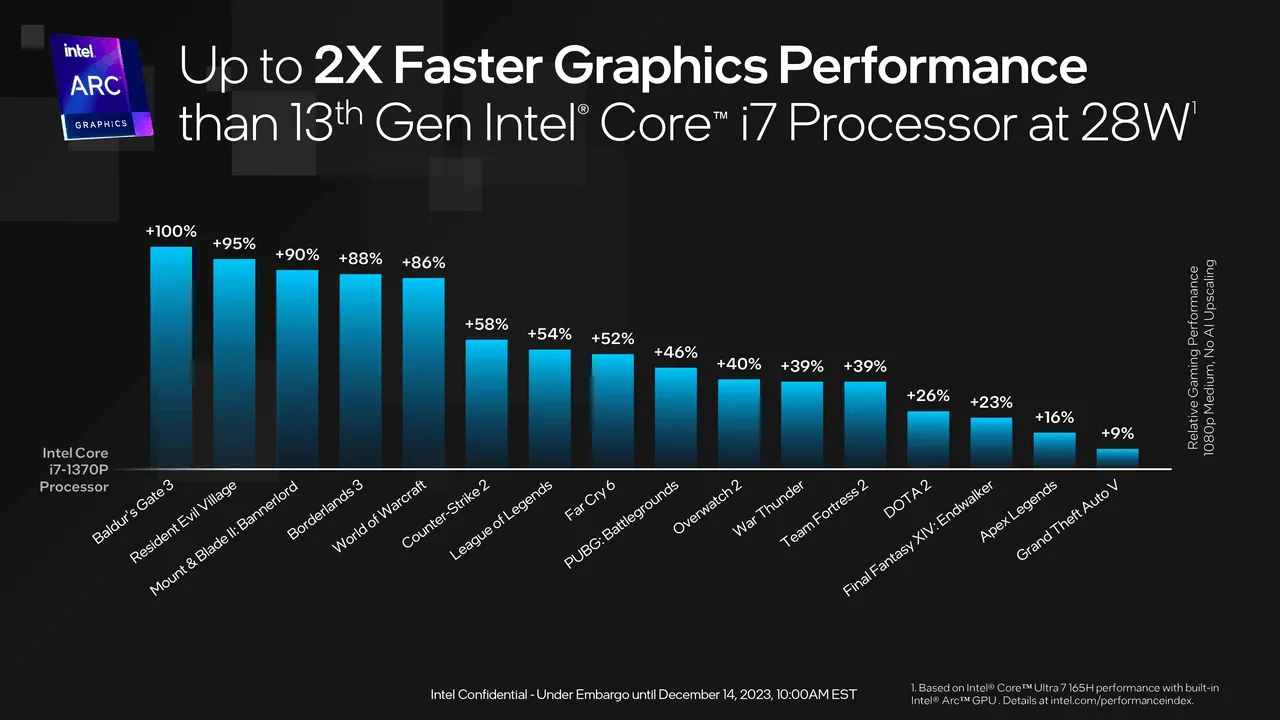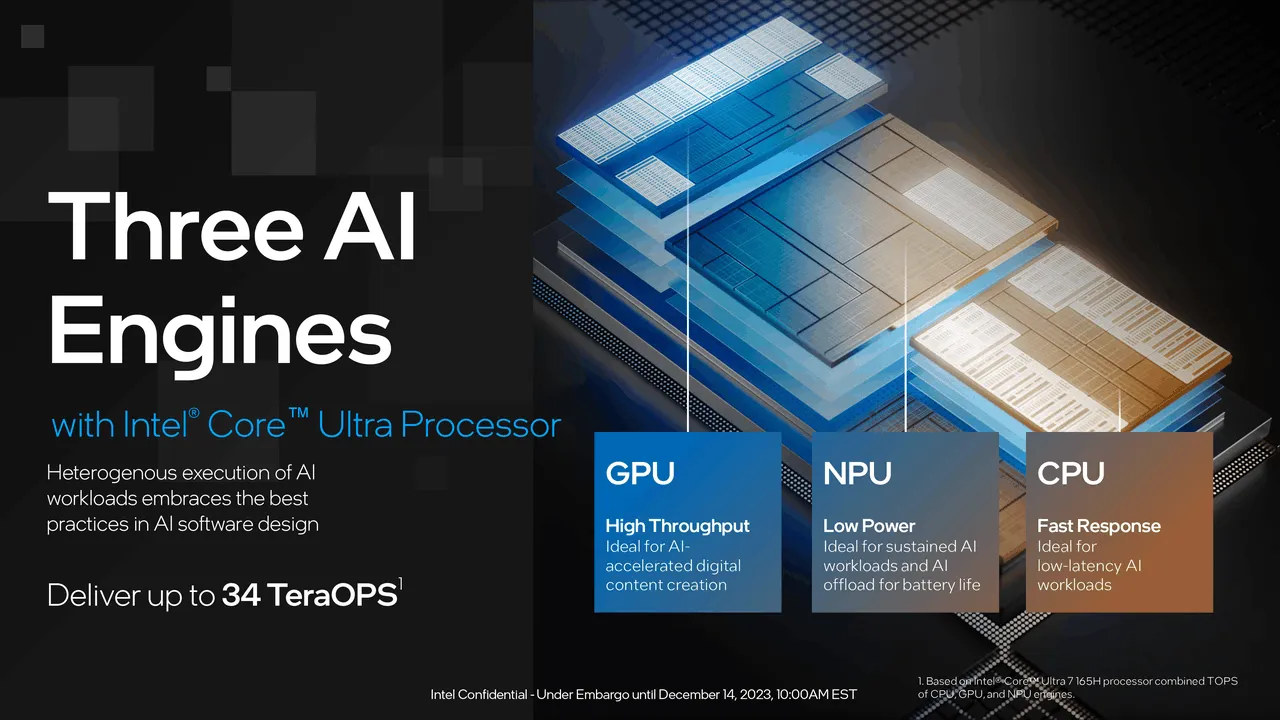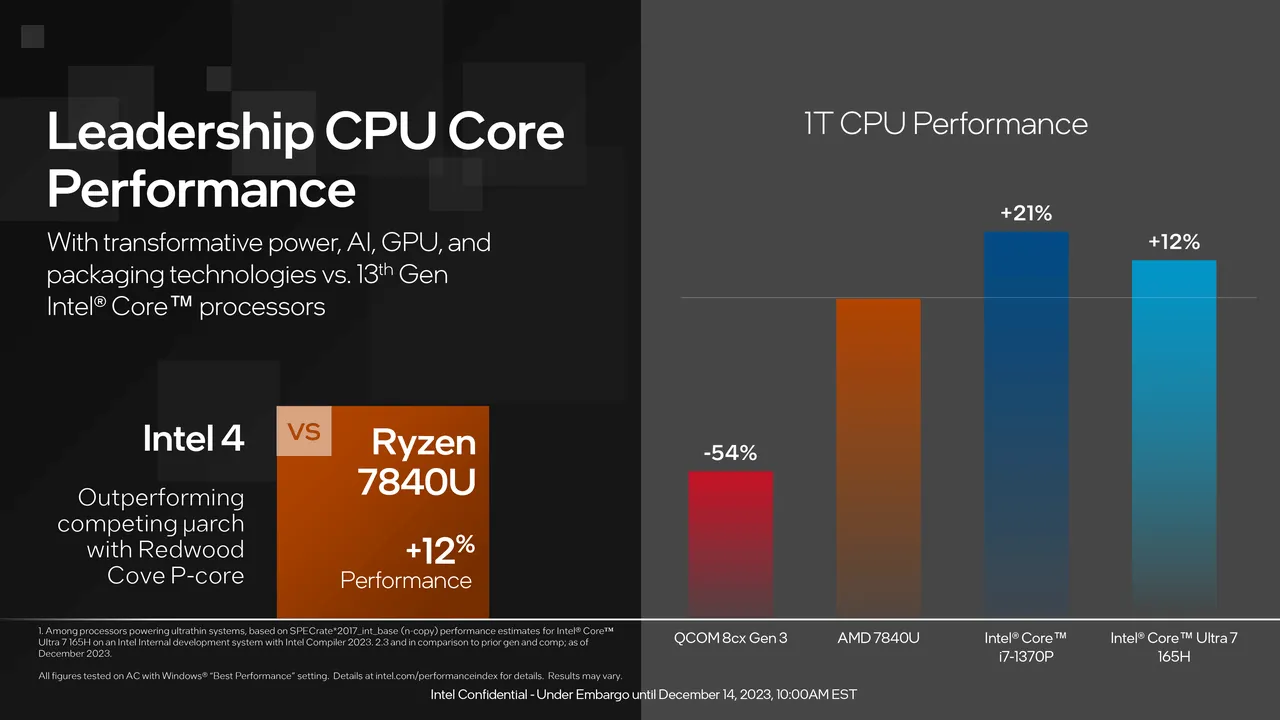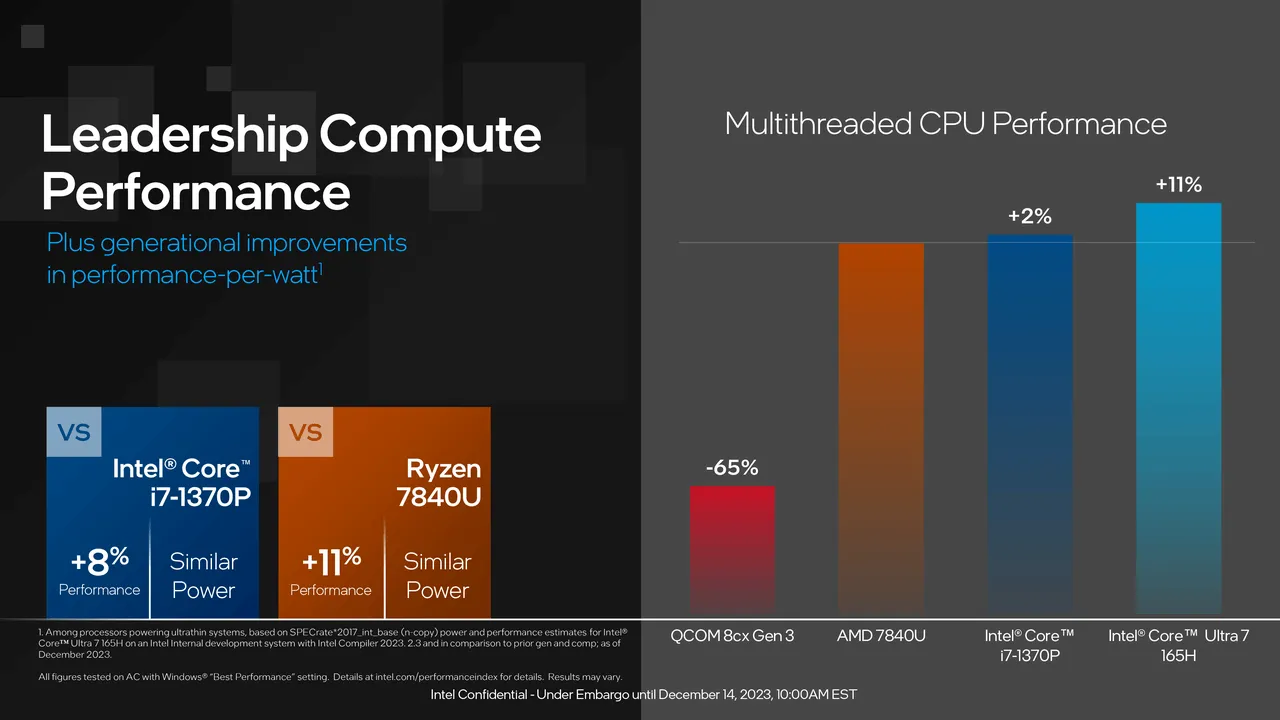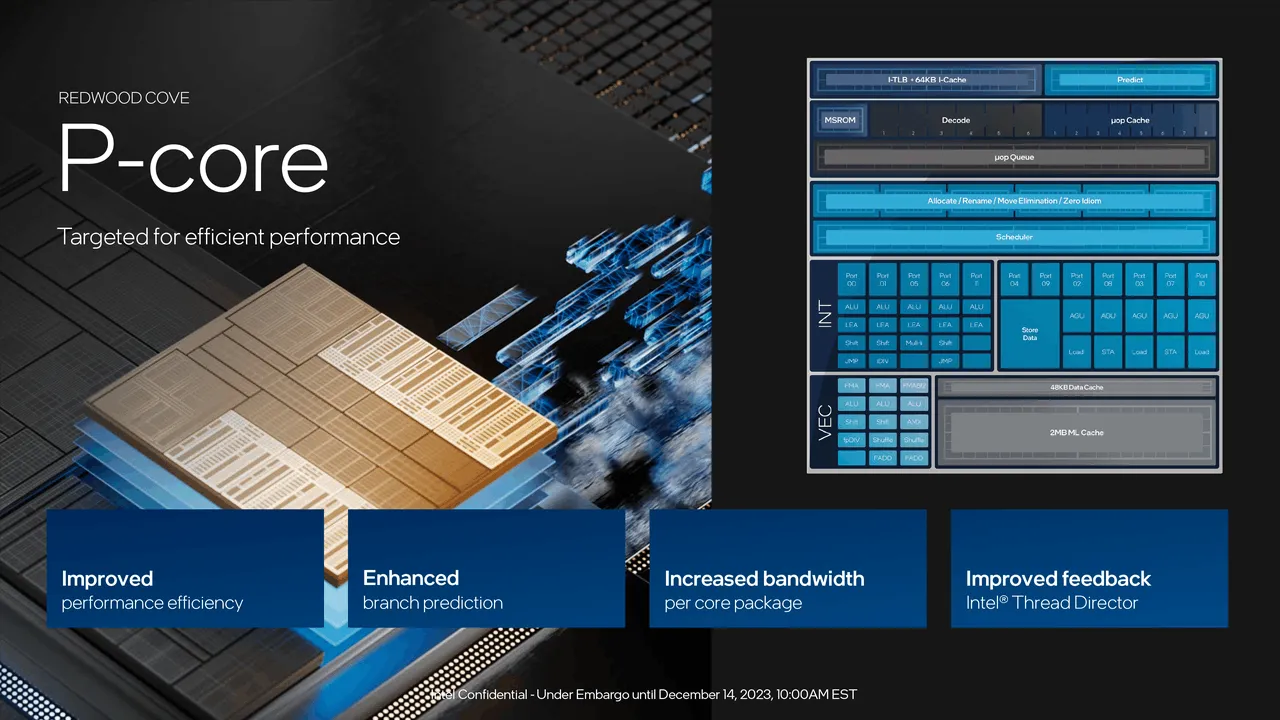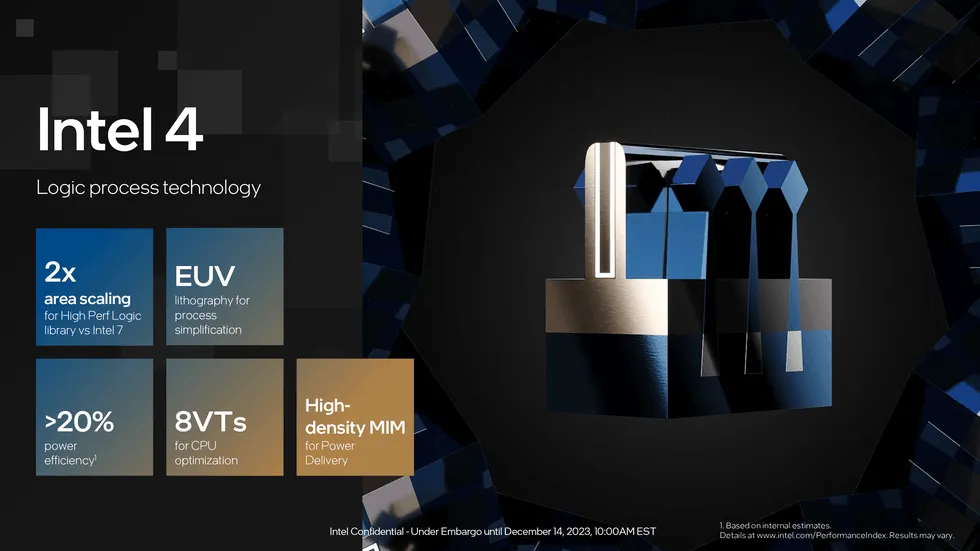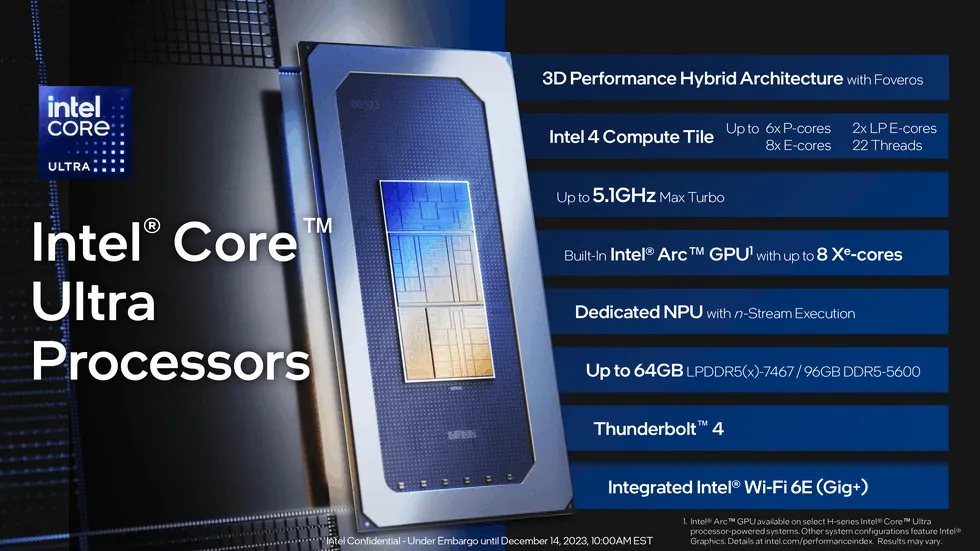Noteworthy advancements can be seen in integrated graphics, with the shift from Xe-LP to Xe-LPG architecture, drawing from the Alchemist (Xe-HPG) discrete GPU series. The GPU tile will support DirectX 12 Ultimate, hardware-accelerated ray tracing, DP4a XeSS upscaling, and advanced encoding features like AV1, H265, and VP9.
Intel has conducted benchmarking of the integrated GPU architecture, featuring 8 Xe-Cores with a boost frequency of up to 2.35 GHz in the top-tier Core Ultra SKU (185H). Their internal tests indicate double the performance of the previous generation at 28W, with a 10% advantage over the Ryzen 7 7840U RDNA3 iGPU. Another pivotal aspect of the Meteor Lake series is AI acceleration, capable of delivering up to 34 TOPS. This represents a substantial 70% boost in generative AI workloads compared to the Raptor Lake series, with the true potential expected to materialize with the advent of Windows 12.
The Core Ultra series breaks away from the traditional Core i# naming convention, adopting a simplified Core # tiering system. Comprising 11 new models, including five in the Core-H series and six in the Core-U series, these CPUs vary in power, graphics capabilities, and release timelines. The flagship Core Ultra 9 185H model boasts a unique configuration with 16 cores and 22 threads, offering maximum boost speeds of 5.1 GHz for P-Cores and 3.8 GHz for E-Cores. It is accompanied by an Arc GPU featuring 8 Xe-Cores. The model exhibits a base power of 45W, with a maximum turbo power of up to 115W. Various Core Ultra 7 and 5 SKUs present diverse configurations with distinct clock speeds and power specifications. Intel's roadmap also includes the launch of the Core Ultra 100U series, targeting low-power applications with default TDPs of 15W and 9W. These CPUs feature reduced P-Core counts and 4 Xe-Cores, making them ideal for handheld gaming systems, offering a balance between power efficiency and performance. Intel anticipates the availability of select models, such as the Core Ultra 9 185H, Ultra 7 164U, and Ultra 5 134U, starting in Q1 2024, with other models following suit.

